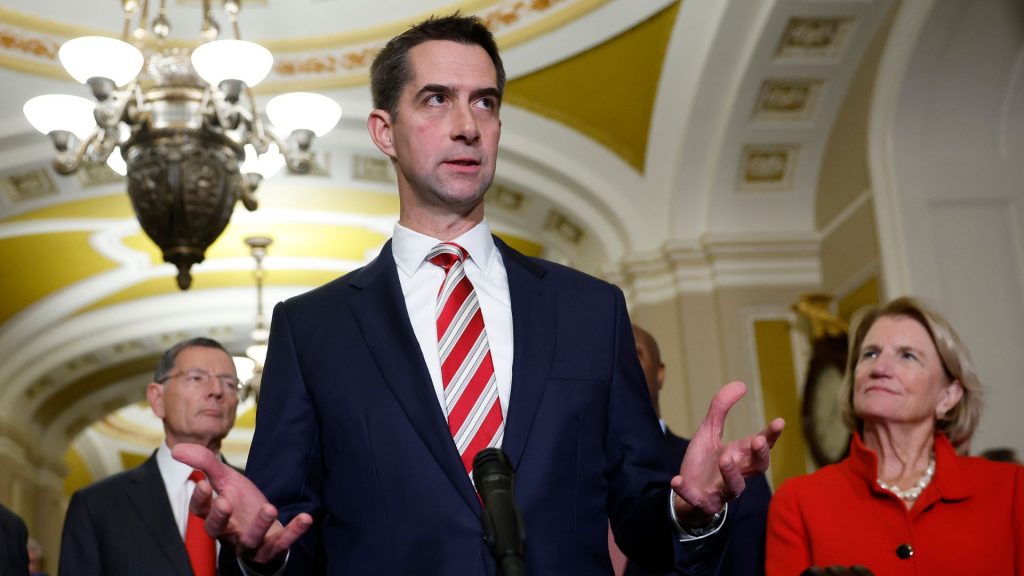GOP senator blocks Trump-backed plan to make daylight saving time permanent

Sen. Tom Cotton, R-Ark., blocked a bill that would make daylight saving time permanent for all of America. The bipartisan bill had support from President Donald Trump, who endorsed the idea in April.
The idea of changing the more than a century-old practice has gained popularity among the public, but the country is divided on which time to leave clocks set to.
Why did Cotton block the bill?
Unbiased. Straight Facts.TM
Time transitions spike fatal car crashes by up to 8% the following week as sleep-deprived drivers hit the road.

On Tuesday, Cotton objected to the bill after Sen. Rick Scott, R-Fla., tried to advance the bill by unanimous consent.
“If permanent Daylight Savings Time becomes the law of the land, it will again make winter a dark and dismal time for millions of Americans,” Cotton said.
He said many Americans would wake up to complete darkness during the height of winter.
“The darkness of permanent savings time would be especially harmful for school children and working Americans,” he said.
Does the bill have support?
Lawmakers have tried to make daylight saving time the norm for years. It’s also one of the few legislative positions with broad bipartisan support.
Sens. Sheldon Whitehouse, D-R.I., and Tommy Tuberville, R-Ala., both called on the Senate to pass the bill on Tuesday. Scott reiterated their stance, calling the practice “completely outdated.”
“The American people are sick and tired of changing their clocks twice a year,” he said. “It’s confusing, unnecessary and completely outdated.”
What does the public think about the change?
Much like the Senate, the American public is also split on this issue. A recent Gallup poll found that about half of the country would prefer permanent standard time, while only 24% preferred permanent daylight saving time.
Other polls found most people preferred daylight saving time. But researchers at Stanford Medicine say most Americans would be healthy without daylight saving time.
Their study found that the current method — changing times twice a year — is the worst choice, and permanent standard time is best for most people.
Researchers said the change affects people’s circadian rhythm, which is the body’s natural clock and that regulates many physiological processes. They noted that permanent standard time has the least burden on the body’s circadian rhythm because you get more light in the morning and less in the evening.
“When you get light in the morning, it speeds up the circadian cycle. When you get light in the evening, it slows things down,” study author Dr. Jamie Zeitzer said. “You generally need more morning light and less evening light to keep well synchronized to a 24-hour day.”
A move to permanent standard time is also supported by several groups dedicated to healthy sleep, like the American Academy of Sleep Medicine, the National Sleep Foundation and the American Medical Association, according to the study.
What is the history of daylight saving time?
It’s a common myth that lawmakers enacted daylight saving time for farmers, but farmers are among the largest groups opposed to the practice. Congress first implemented daylight saving time in 1918. It was a wartime measure during World War I to extend daylight hours and conserve energy.
During this time, the country observed year-round daylight saving time, but after the war, local jurisdictions were allowed to choose when and how to observe it. Then, in 1966, Congress passed the Uniform Time Act, which mandated when to switch.
However, America did experiment with a permanent daylight saving time before. In 1974, President Richard Nixon enacted permanent daylight saving time to conserve energy. The initial two-year plan was met with such strong opposition that it was discontinued after only one year.
The post GOP senator blocks Trump-backed plan to make daylight saving time permanent appeared first on Straight Arrow News.





